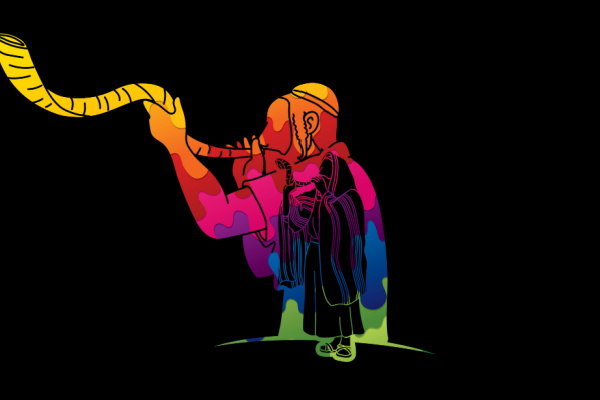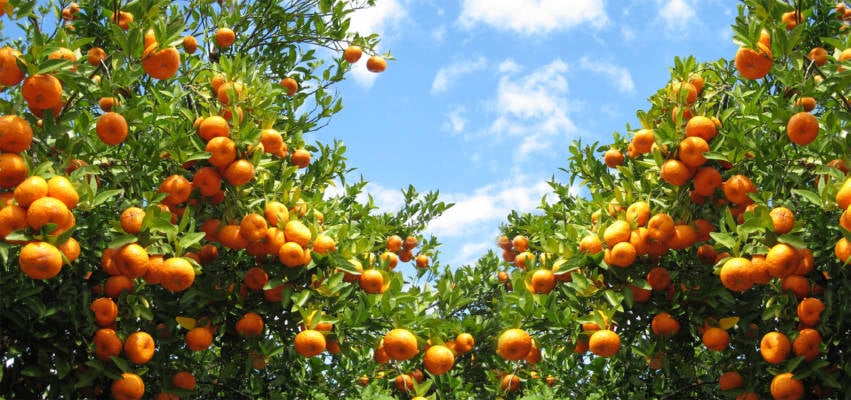Our actions on Rosh Hashanah have a tremendous impact on the rest of the year.
By Rabbi Ari Enkin, Rabbinic Director, United with Israel
This coming Sunday night begins the two-day holiday of Rosh Hashanah. Rosh Hashanah is the birthday of mankind — the day God created Adam and Eve.
The holiday’s name is literally the “head of the year” rather the “beginning of the year.” That’s because just like the head controls the body, so too, our actions on Rosh Hashanah have a tremendous impact on the rest of the year.
This is one of the reasons why we eat plenty of symbolic foods on Rosh Hashanah. It is believed that eating such food has the ability to trigger the blessings that the foods represent in the coming year.
Rosh Hashanah is the first and second day of the Hebrew month of Tishrei. Candles are lit each evening of Rosh Hashanah to usher in the day. Indeed, the two days of Rosh Hashanah are unique in that they are essentially two independent holidays, yet together they are the “one long day” of Rosh Hashanah. From Sunday night until Tuesday night, we will immerse ourselves in prayer, good food, reflection, and unity.
The shofar is the central ritual of Rosh Hashanah. Indeed, the Torah calls Rosh Hashanah “Yom Teruah” – the day of shofar blowing. It is only from the Talmudic era onwards that the term “Rosh Hashanah” has been used to identify this holiday.
Furthermore, in our prayers, we also call Rosh Hashanah “Yom Hazikaron” (the Day of Remembrance) and “Yom Hadin” (the Day of Judgement). Together with Yom Kippur, which comes 10 days after Rosh Hashanah, this period in known as the “Yamim Nora’im” (“Days of Awe” or “High Holidays”).
Rosh Hashanah is also the day of judgement. Not just for the Jewish people, but for all mankind. The Rosh Hashanah prayers mention “all the inhabitants of the world pass before God like a flock of sheep to be judged” and it is decreed “who shall live, and who shall die … who shall be impoverished and who shall be enriched; who shall fall and who shall rise.”
As such, we immerse ourselves in prayer, asking God for a year of peace, prosperity and blessing. While there might be a “scary” component to Rosh Hashanah being that it is the day we are judged, it is also a joyous day as Rosh Hashanah also celebrates God as King of the world.
The Torah reading on the first day of Rosh Hashanah is the passage about Isaac’s birth and the banishment of Hagar and Ishmael. The reading from the prophets is the story of the birth of Samuel the Prophet. Both readings contain the theme of prayers for children being answered, and both of these births took place on Rosh Hashanah. The Torah reading on the second day of Rosh Hashana is about Abraham’s near-sacrifice of his son Isaac.
As mentioned, the central observance of Rosh Hashanah is the sounding of the shofar, the ram’s horn, on both days of the holiday. However, the shofar is not blown on Shabbat. As such, when the first day of Rosh Hashanah falls out on a Shabbat the shofar is only blown on the second day of Rosh Hashanah.
The shofar is blown for the first time on Rosh Hashanah after the Torah reading service. At that time, 30 blasts are blown, with most congregations blowing an additional 70 blasts throughout the remainder of the service at different times, depending on the congregational custom.
The shofar is blown in three different notes: the tekiah, a long sob-like blast, the shevarim, which is a series of three short wails, and the teruah, at least nine piercing staccato bursts.
The sounds represent the trumpet blasts that are sounded at a king’s coronation. They also serve as a wake-up call to repentance and return to God. The shofar also recalls the near sacrifice of Isaac, which happened on Rosh Hashanah.
One who cannot attend services should be sure to arrange for a “house call” – for someone to come and blow the shofar sometime before the end of the day.
The prayers are longer than usual with much of the day spent in synagogue. The holiday prayerbook—called a machzor—contains all the prayers and Torah readings for the entire two days including mealtime rituals and the Tashlich ceremony recited by a body of water on Rosh Hashanah afternoon.
The machzors also include dozens of extra poems and readings, known as “piyyutim” which are recited throughout the service. They emphasize the themes of the holiday, particularly God as King of the world. For the most important piyyyutim, the ark is opened and the congregation stands. Some are said (or sung) in unison, others are responsive between the cantor and the worshippers.
Synagogues have differing customs on which piyyutim are said so it’s very easy to lose your place in the prayer book.
Shana Tova! A good year to all!
REBUILD ISRAELI FARMS DESTROYED BY HAMAS - PLANT TREES!
ISRAELI FARMERS DESPERATELY NEED YOUR YOUR HELP
Hamas tried to destroy everything. Terrorists murdered 1200 innocent Israelis. Join us in planting 12,000 trees of life to honor the victims. Send blessing to the People and Land of Israel.
“…I will ordain My blessing for you…” (Leviticus 25:4,21)
JOIN OUR CAMPAIGN TO PLANT 12,000 NEW FRUIT TREES ACROSS THE LAND OF ISRAEL!




